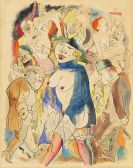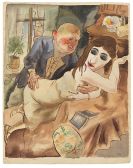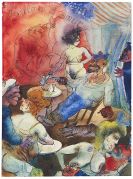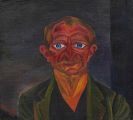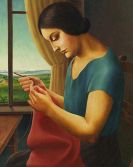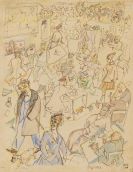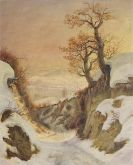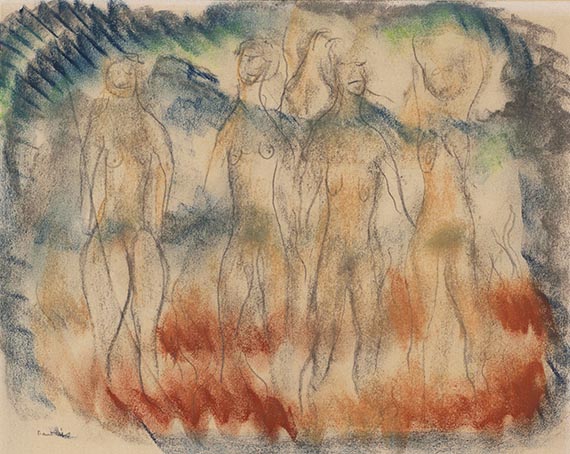
Gustav Wunderwald
Köln
1882 -
Berlin
1945
Gustav Wunderwald was born in Cologne-Kalk in 1882. He started his career by serving an apprenticeship under the Cologne master painter Wilhelm Kuhn. In 1899-1900 Gustav Wunderwald worked as a stage-set painter in Gotha and later for the Charlottenburg studio for stage painting in Berlin as well as other European theatres, including the Royal Opera in Stockholm and the Innsbruck Stadttheater.
Gustav Wunderwald did not settle permanently in Berlin until after the first world war. His first solo show at the Landsberg bookshop was followed by an essay written by Paul Westheim, who made Gustav Wunderwald known to the public at large.
Focusing primarily on Berlin street life at the time, Wunderwald painted scenes from various sections of Berlin, such as Wedding, Spandau, Moabit and Prenzlauer Berg. Most of these paintings date from the Roaring Twenties but document the bleak side of urban living in the "New Objectivity" style.
From 1927 Wunderwald showed his scenes from the big city as well as landscapes featuring the Havel region and East Prussia at exhibitions. While the National Socialist regime was in power, Gustav Wunderwald no longer showed work publicly, eking out a living by tinting advertising films for Ufa and Mars Film. Before he could resume a career as a freelance painter after the war, Gustav Wunderwald died of drinking poisoned water in Berlin in June 1945.
On the occasion of what would have been his 100th birthday, he was honoured by a posthumous exhibition at the Städtische Galerie Albstadt and the Berlinische Galerie. His pictures now figure prominently in the collections owned by major Berlin museums.
Would you like to sell a work by Gustav Wunderwald?
Infos for seller
